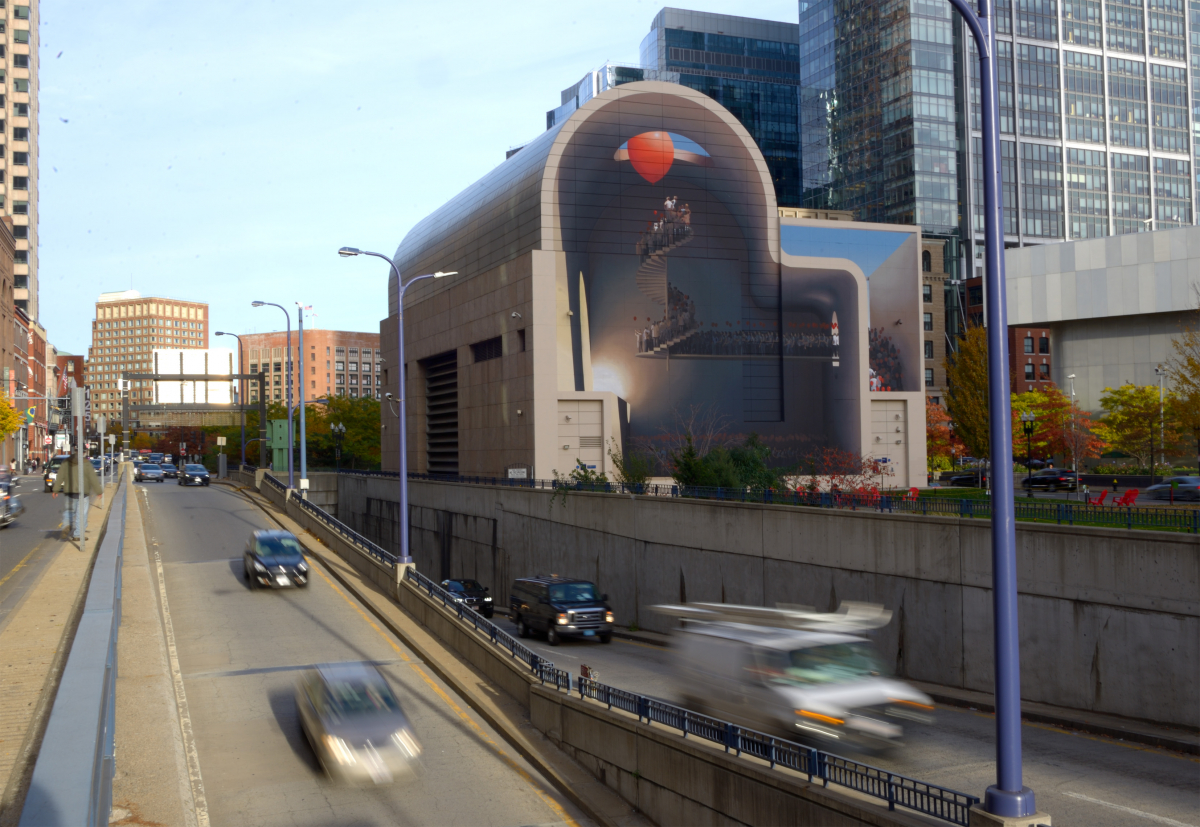2018 PAN Year in Review Trends and Themes: Site Responsive Projects
Posted by Feb 11, 2019

Mr. Lucas Cowan

Mr. Kipp Kobayashi

Ms. Mandy Vink
Annually, the Public Art Network (PAN) Year in Review recognizes outstanding public art projects that represent the most compelling work for the year from across the country and beyond. The projects are selected and presented by a jury of three professionals who represent different aspects of the public art field, including artists, administrators, and other public art allies. New this year, the PAN Advisory Council curated the selected 49 selected projects for 2018 under five unique themes to broaden the exposure of the selected works on ARTSblog and social media, and to provide context to the works through national trends and themes that are impacting the field today.
Site Responsive Projects
Site-responsiveness is a hallmark of public art, wherein the artist(s) commits to an investigation of site to inform the work. Creative investigation considers geography, locality, topography, community (local, historical and global), and history (local, private and national)—sometimes re-telling well-known stories and sometimes unearthing long forgotten or unheard stories.
The 2018 PAN Year in Review projects featured below each serve as a social agent to explore local histories of what we build, create, and invent. Holding our histories to inform our futures, these works also explore human perception, evolution, conflict, and progress. Many of these projects acknowledge environments or communities that once existed in these landscapes, reinterpreting history of community in a contemporary and, in many cases, interactive way.
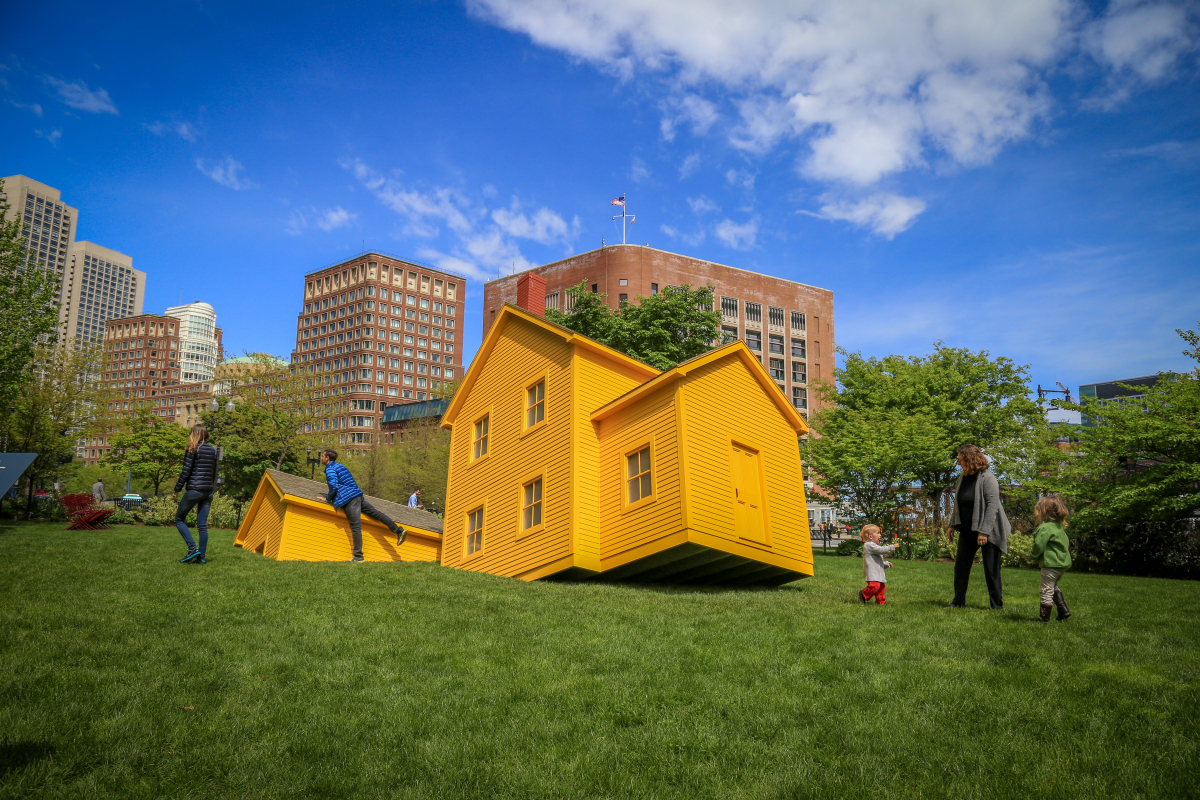
The Meeting House by Mark Reigelman II, commissioned by The Rose Kennedy Greenway Conservancy
Drawing from two significant parts of New England history, Reigelman’s The Meeting House invited visitors to investigate Boston’s architecture and unearth the downtown area’s unique past. The dwelling sought to remind viewers of the thousands of displaced residents and demolished homes sacrificed for the city’s once-elevated highway infrastructure project. Furthermore, the installation drew from the Pembroke Friends Meeting House—the oldest surviving Quaker meetinghouse in Massachusetts—known for its progressive ideas like slavery abolition, prison reform, social justice, and gender equality.
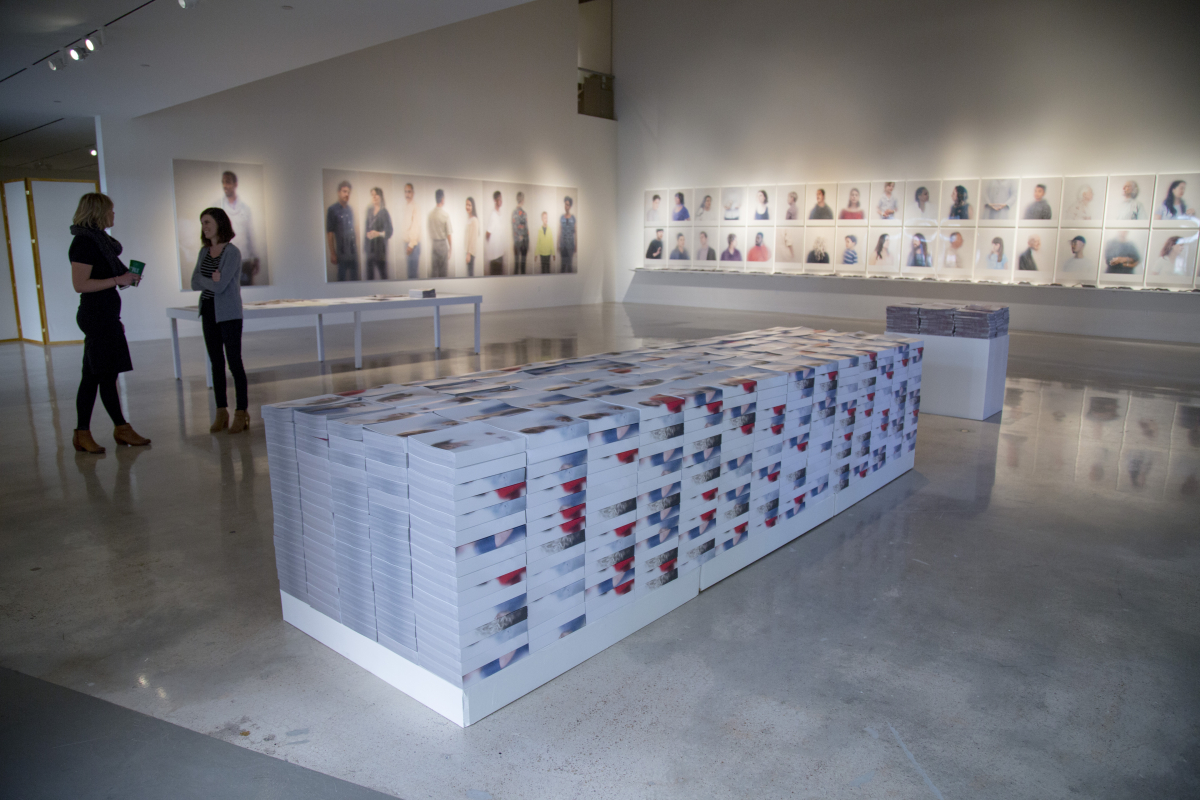
ONEEVERYONE by Anne Hamilton, commissioned by Landmarks, the public art program of The University of Texas at Austin
Rooted in the idea that human touch is the most essential means of contact and the fundamental expression of physical care, the project visualized touch through a series of photographs. More than 500 local volunteers at twelve Austin locations stood behind a cloudy screen while the artist took photos from the other side, capturing in focus the points where their bodies touched the screen. Extending the idea of touch into the community, several temporary and ongoing project elements complemented the panels: a temporary exhibition was created; 10,000 artist books containing images of each participant were distributed for free; a newspaper with essays was published; and a website was created.
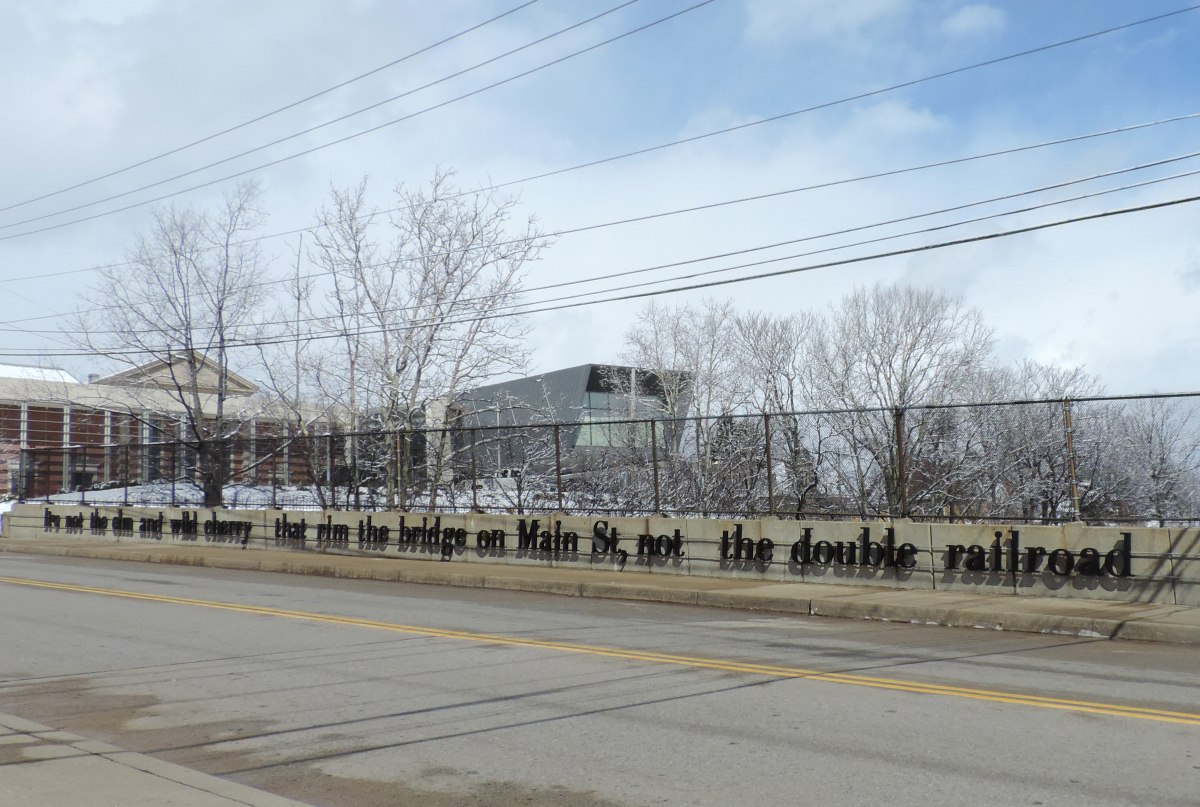
Analog Scroll by Janet Zweig, commissioned by Westmoreland Museum of American Art
In 2013, the Westmoreland Museum of American Art (WMAA) in Greensburg, Pennsylvania began a major expansion and renovation of the 58-year-old museum. The museum, which is located on top of a hill, connects to downtown Greensburg via the Main Street Bridge. The goals for the piece were to enhance the physical appearance of the bridge and to encourage communal interactivity. Analog Scroll invites viewers to return to the bridge as lines of text emerge, change position, and eventually disappear.
That Child Of Fleeting Time by Kyungmi Shin/ Shin Gray Studio, commissioned by Bronston Studios/ Hudson Pacific Properties
The artist’s intention was to create a sculpture that has an iconic physical presence at this important historic location, connecting Hollywood’s past to Hollywood’s digital present and future in harmonious dialogue with the architecture of the new ICON building housing the Netflix Headquarters. The old-fashioned film strip served as a motif for the sculpture. The sculpture’s surface is lined with programmed LED bulbs, turning the sculpture into a live movie screen that plays thousands of clips lasting 6 seconds in duration each, shuffled randomly, resulting in an artwork that is always in motion and is never the same. Analog noise was added by distorting the original footage to create colorful abstract sequences that refer to the digital future while looking back at the history of the film industry’s technological evolution.
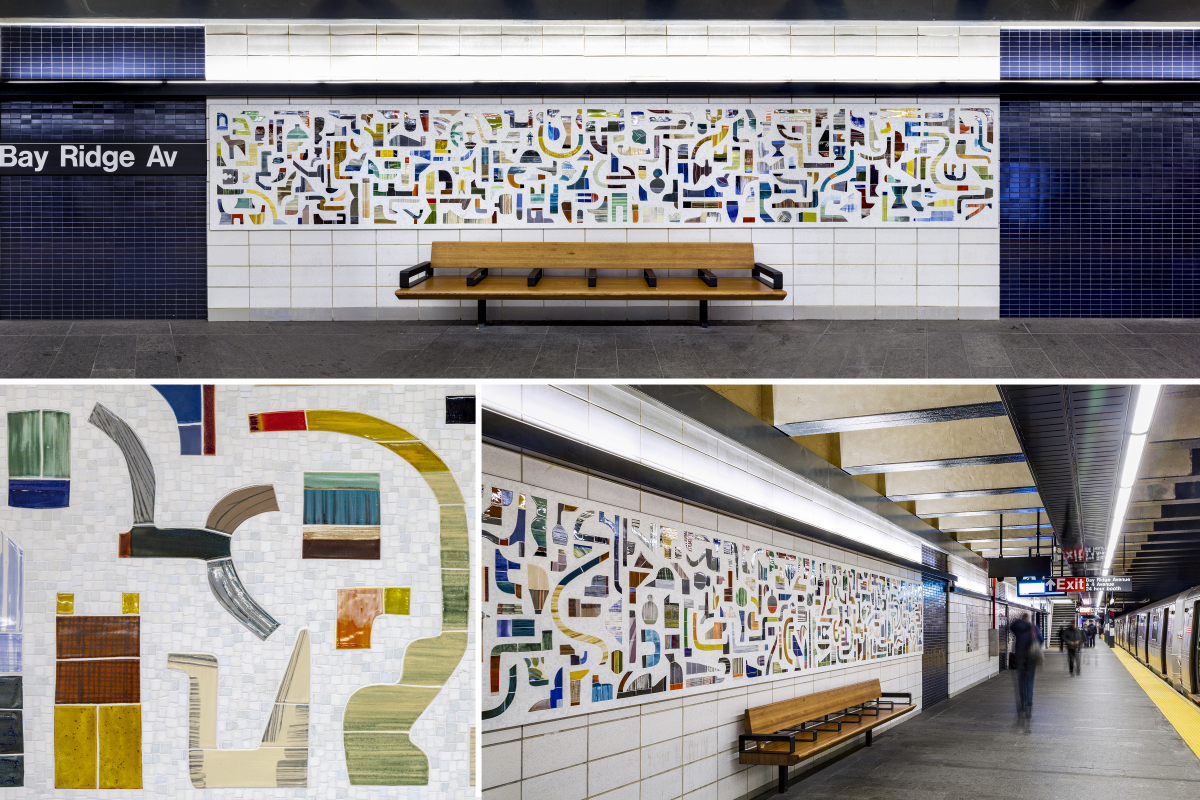
Innovative Transit Stations by Mickalene Thomas, Katy Fischer, Monika Bravo, commissioned by MTA Arts & Design
Expansive mosaics by Mickalene Thomas, Katy Fischer, and Monika Bravo were installed in the stations collectively known as NYC Transit ESI Package 1. Thomas is an artist best known for her mixed-media, collage-like work. Thomas brought the beauty of domestic interiors and New York state plants into the 53 St Station environment using traditional mosaic and printed glass in her untitled artwork. In Fischer’s, hand-glazed ceramic forms are set in a background of monochromatic mosaic. The piece references local history using imagined artifacts inspired by objects that could have been unearthed during the station’s excavation in the early 20th century. The black and white background colors speak to the cyclical nature of the daily commute. Bravo’s mosaic incorporates printed images of historical maps and photos of the nearby waterfront into a larger exploration or color and rhythm. Her bold abstract patterns seem to pulsate with vibrant waves of energy.
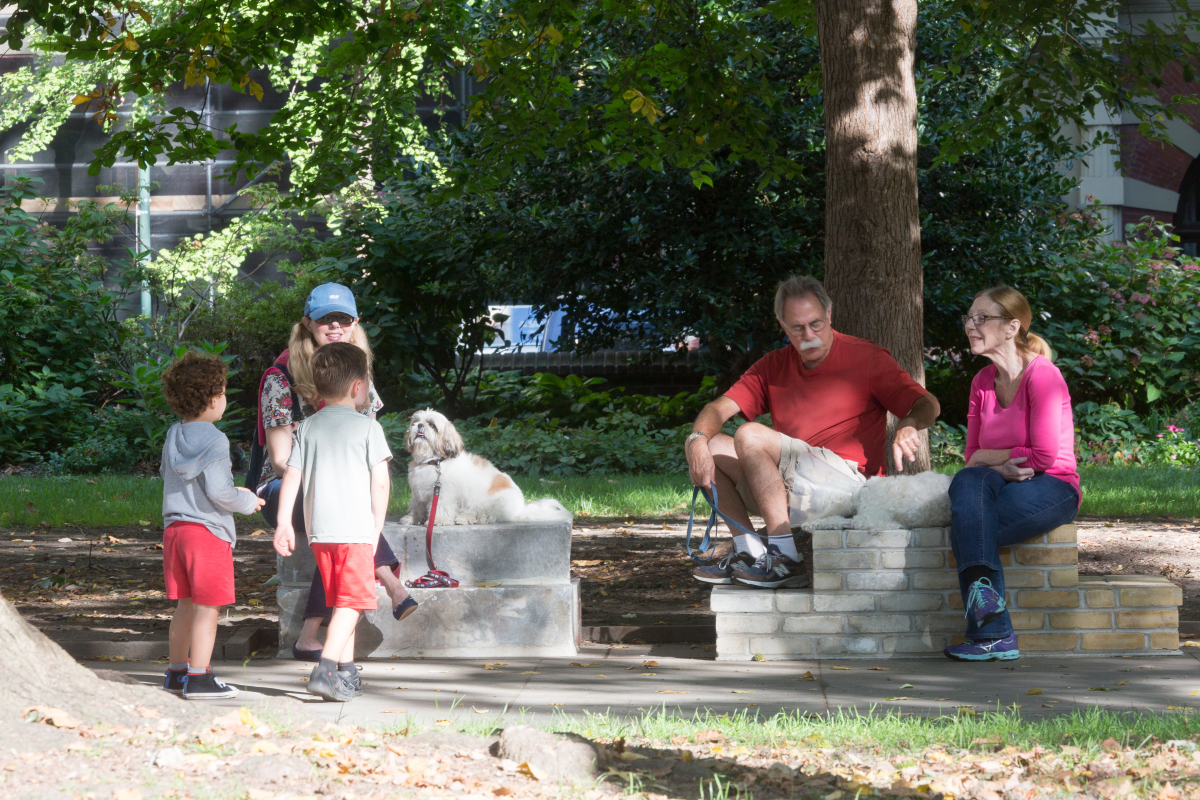
On the Threshold (Salvaged Stoops, Philadelphia) by Kaitlin Pomerantz, commissioned by Mural Arts Philadelphia
On the Threshold (Salvaged Stoops, Philadelphia) is a monument to a beloved symbol of Philadelphia neighborhood culture: the stoop, or step(s). Responding to recent immense change and transformation across city neighborhoods, Pomerantz sought to intercept historic building materials that would otherwise end up in the waste stream. The stoop materials were reconstructed on-site using historical and traditional masonry techniques, and lined the east side of Washington Square Park, creating an opportunity for sitting, gathering, and reflecting on Philadelphia’s past and its future.
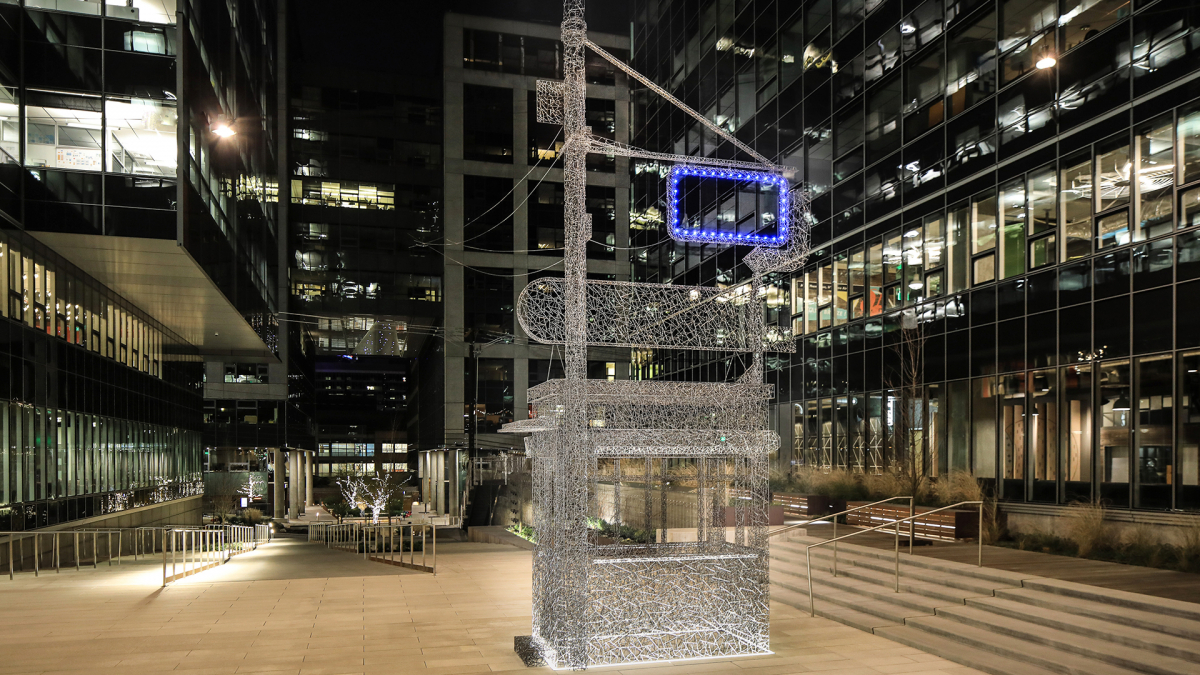
City Fragments by Annie Han of Daniel Mihalyo (Lead Pencil Studio), commissioned by Touchstone, USAA Real Estate
City Fragments mediates an aesthetic between contemporary sculpture and historic artifact. Lead Pencil Studio’s City Fragments is constructed of thousands of small, blackened stainless-steel rods. Like a very delicate pencil drawing hovering in space, it is infinitely mutable, almost ghost-like, and changes dramatically depending on the time of day and Seattle’s weather. Integrated LED lighting at the base of the sculpture heightens the mutability of the form, raking the surface of the blackened steel to render it ghost white. The artwork reflects the artists’ ongoing interest in smaller-scale structures that develop organically over decades in commercial districts: newspaper stands, kiosks, transit stops, comfort stations, and parking attendant huts. The artists view these “non-architecture building types as icons for a transformed neighborhood.” Rendered transparent like an apparition, the structure is a reminder to the thousands of new professionals passing through this area to pause and reflect on the continual evolution and history of the neighborhood.
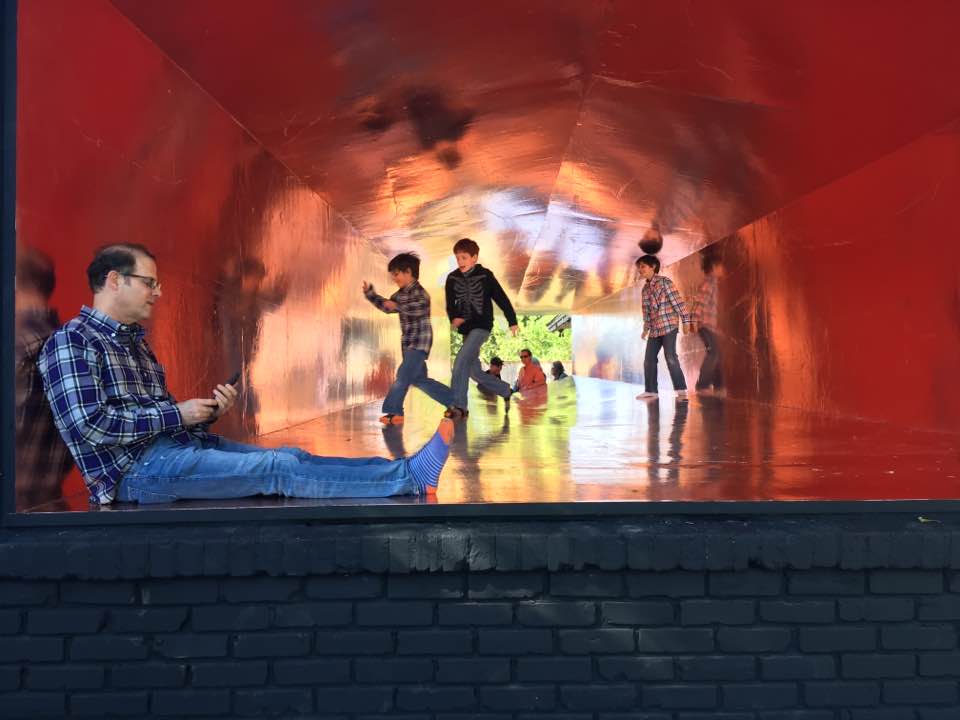
Sharp by Dan Havel & Dean Ruck, commissioned by Seeds of Sharpstown
Havel Ruck Projects obtained a fire damaged house, located in a middle-income Houston neighborhood called Sharpstown, from Seeds of Sharpstown, an organization that collaborates with artists to host creative events using houses slated for redevelopment. Responding to the sleek pointed design of the mid-century house, Havel Ruck sculpturally altered the original “house shaped” picture window of the façade to create a sharp-edged sculptural void that narrows as it travels 30 feet before puncturing the back wall. The opening at the back wall is an inverted, smaller-scaled house shape, with a 180-degree twist reflected in the changing pitch of the void’s ceiling and floor. Lined with a 3ml copper foil adhered to plywood walls, the void is designed to capture the sunlight and fill the interior space with refracted light and reflections.
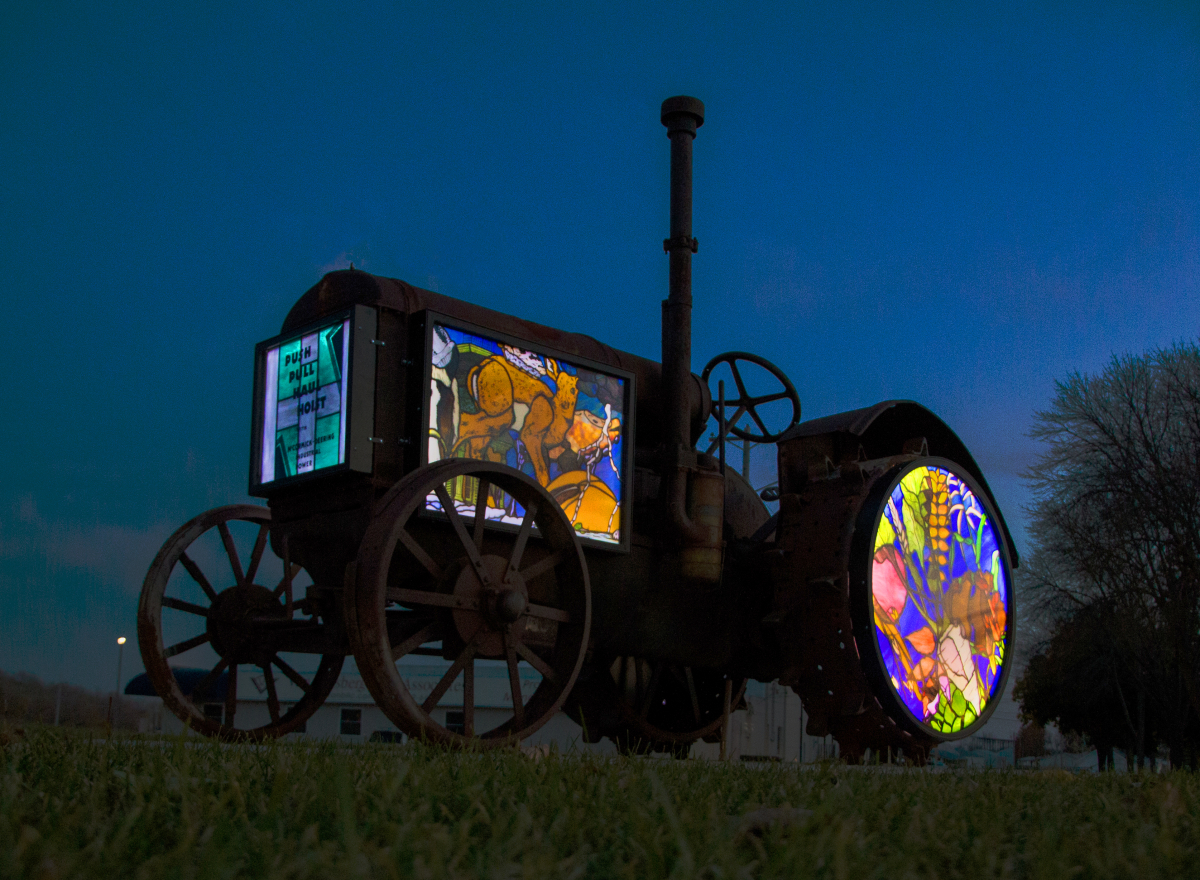
RUSTICIAN (Hide and Seek...Seek and Find) by Karl Unnasch, commissioned by the City of Montevideo
This whimsical montage consists of a 1920s-era McCormick Deering tractor bedecked with original backlit stained glass in the artist’s signature style. The work pays homage to the local threads that have woven together over time to become the fabric of Montevideo, Minnesota today. The tractor—itself symbolic of the transition from the pre-industrial to the post-industrial era—is accoutered with panels reflecting various aspects of local and regional history. Images portraying the Spirit of Nature—such as extreme wind, temperature, and moisture levels—serve as a tribute to the Land Stewards’ many challenges throughout time. The Farmer has always been a land-bridge between the urban and the natural worlds, and as such also has always been a traditional surveyor of knowledge. RUSTICIAN seeks to embody the stalwart beauty of this spirit in reverence to both our hardy rural roots and the crucial sustenance that agriculture provides.
Spaces of Hope by Mehdi Ghadyanloo, commissioned by The Rose Kennedy Greenway Conservancy
Mehdi Ghadyanloo has become internationally known for painting over 100 surrealist city-scale murals in his native Tehran, and the artist’s Boston mural represents his American debut. Spaces of Hope depicts individuals walking through and up a series of platforms and staircases that eventually spirals like a helix toward an opening in the dome created by the building’s curved wall. There, at the very top, a large red balloon hovers in wait, suspended in midair as light streams in through the oculus above. Like the other sun-filled apertures in the composition, this opening to the sky serves to bathe an otherwise somber scene in radiance. Per the artist’s account, the mural commemorates the small wishes—which take the shape of fragile balloons on the verge of popping at any given moment—that individuals carry throughout their lives. Foregoing political commentary in his public art, Ghadyanloo is more interested in capturing and communicating dreams and imaginations that people all over the world share.

